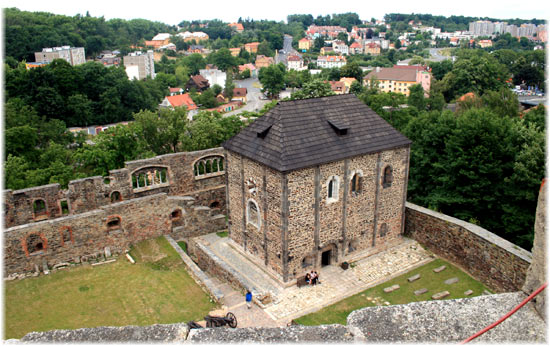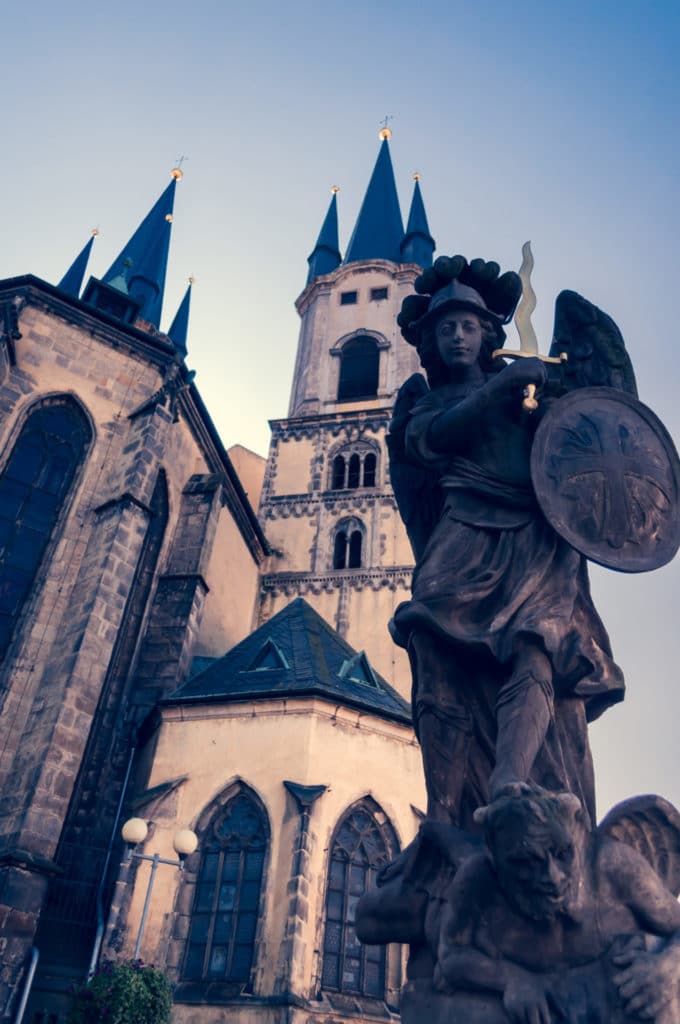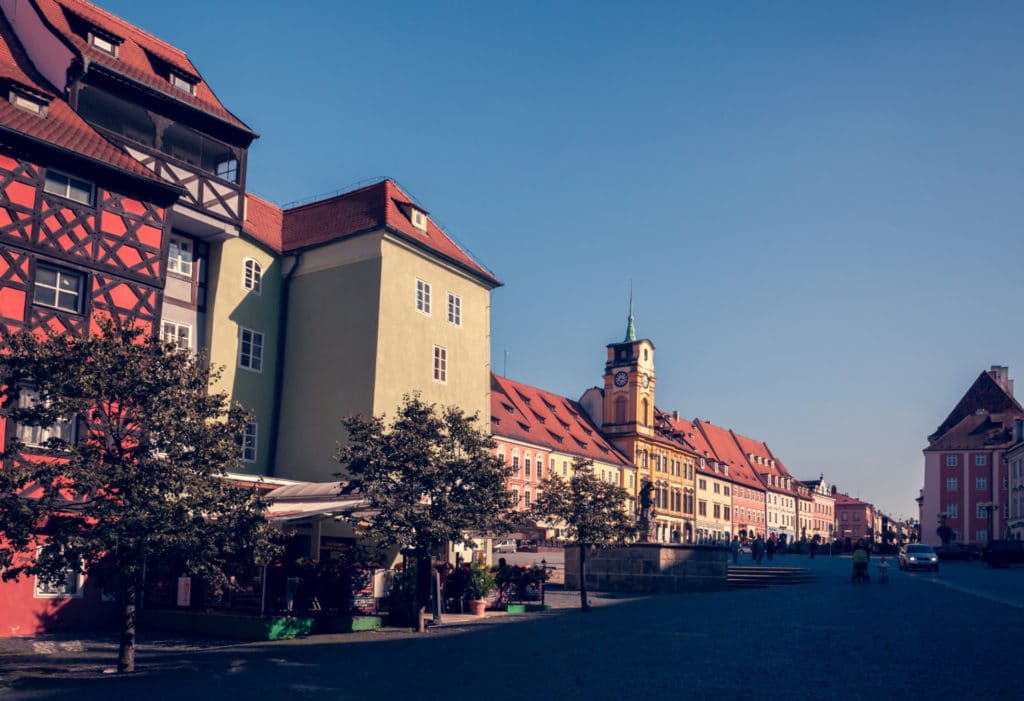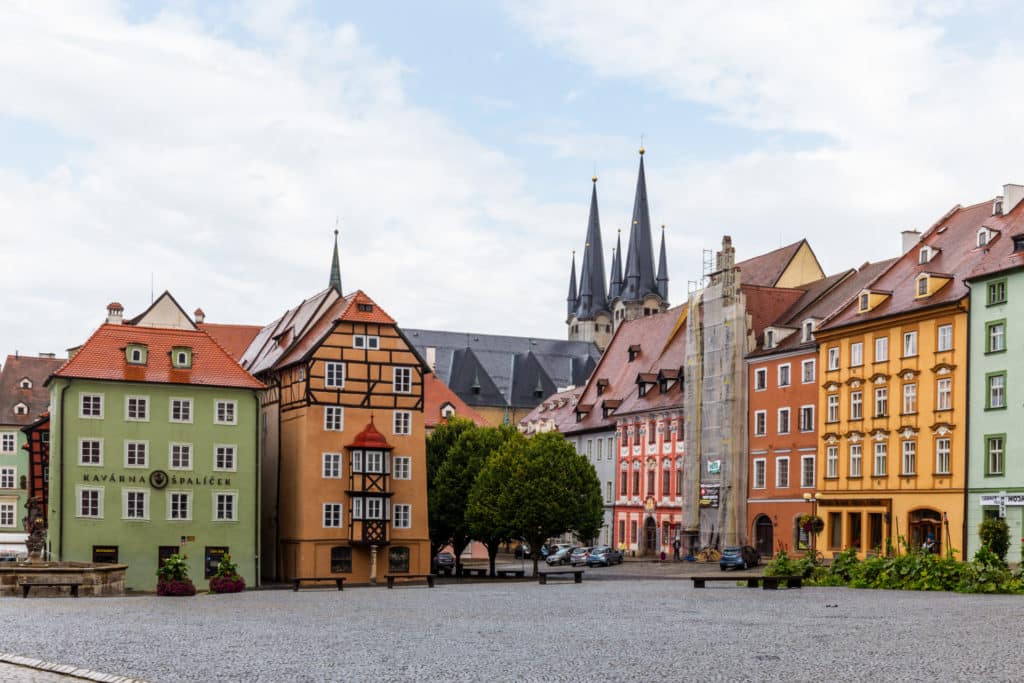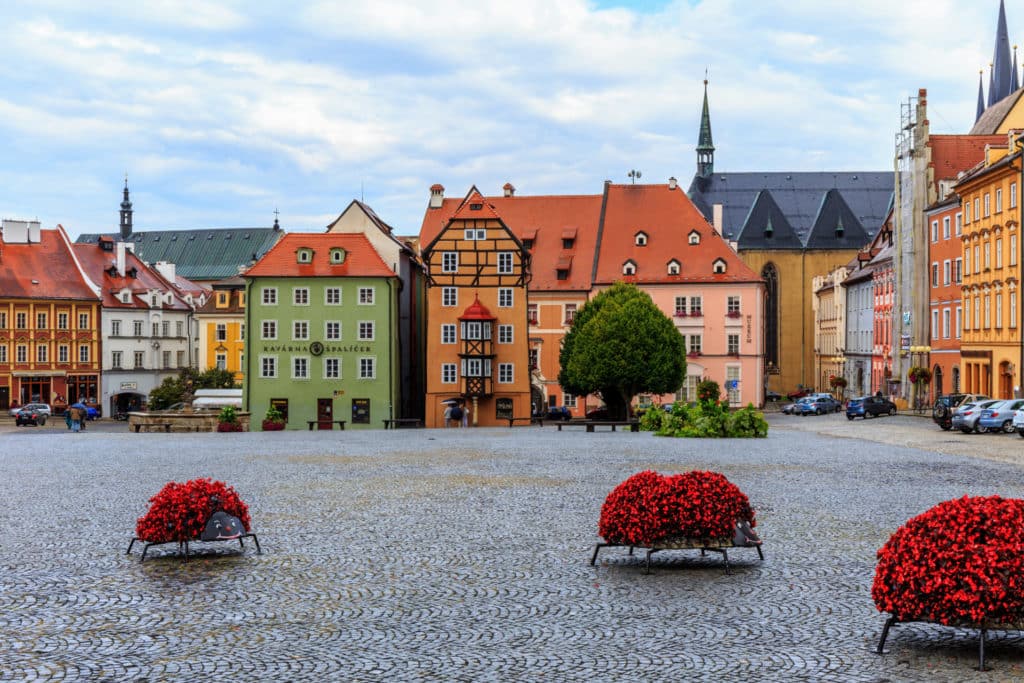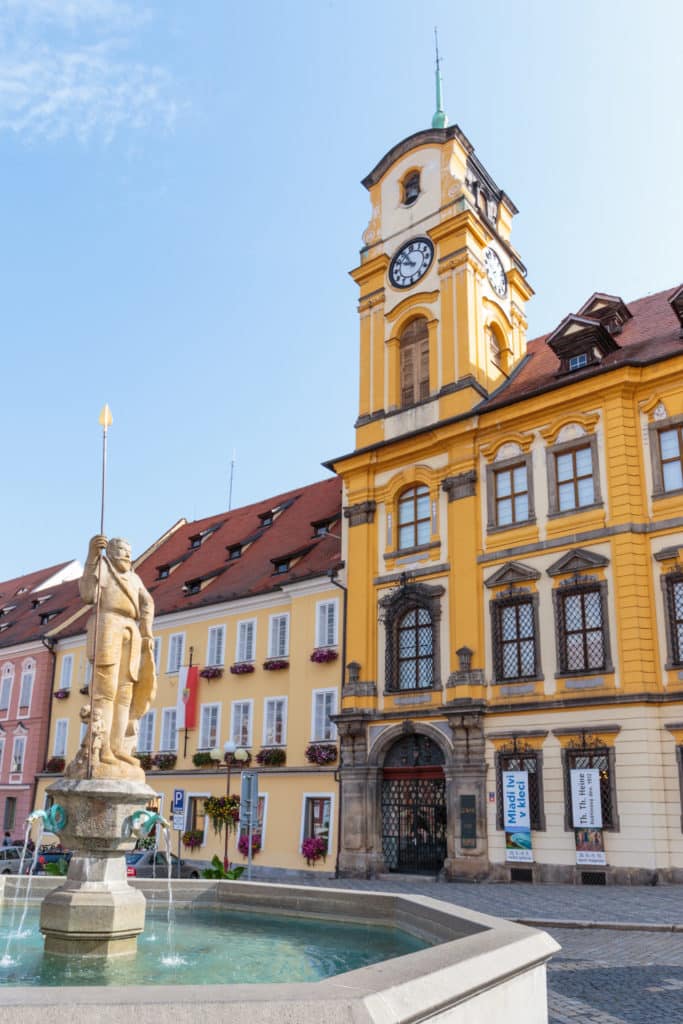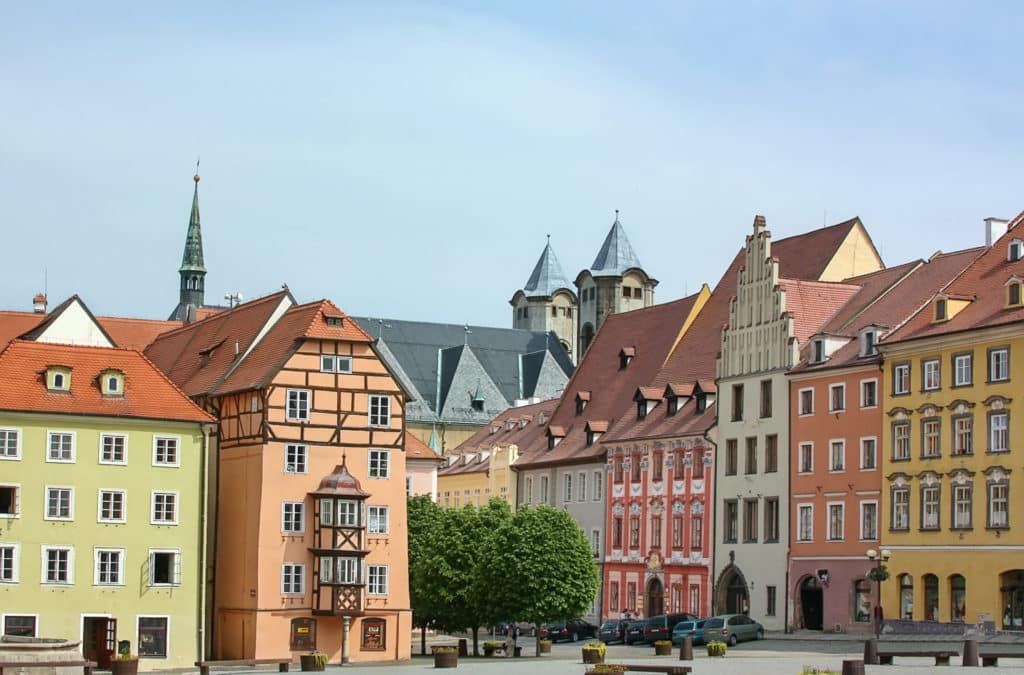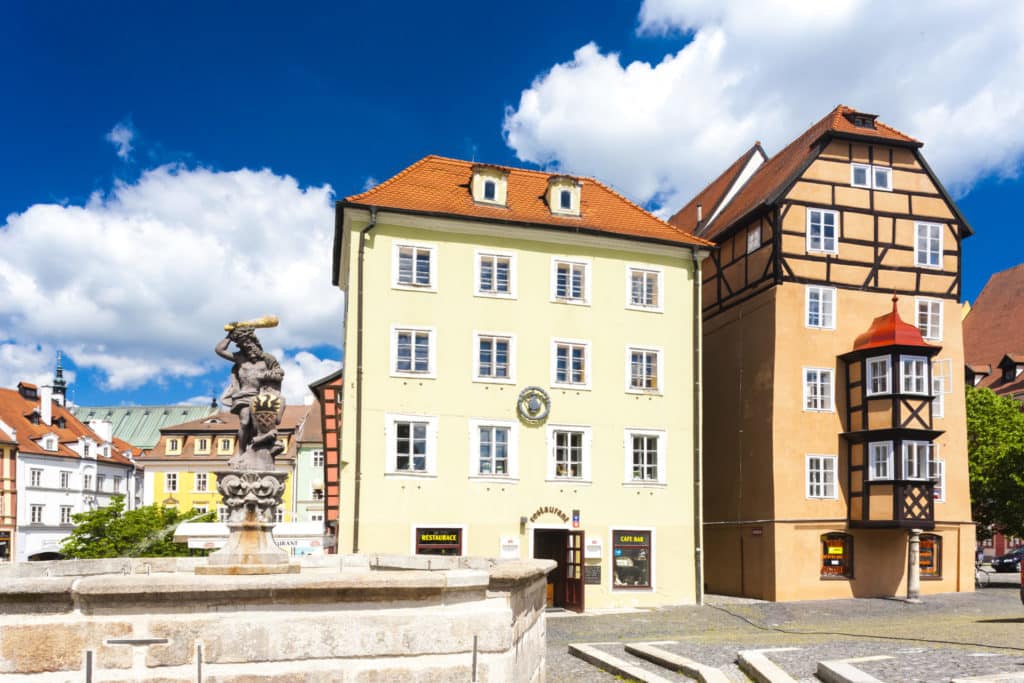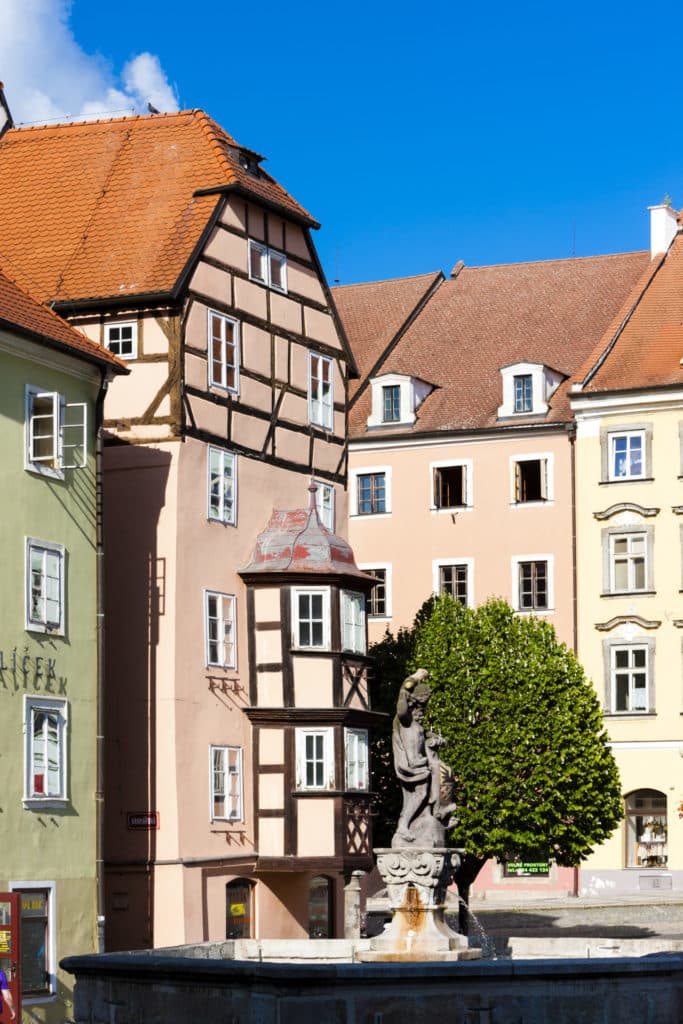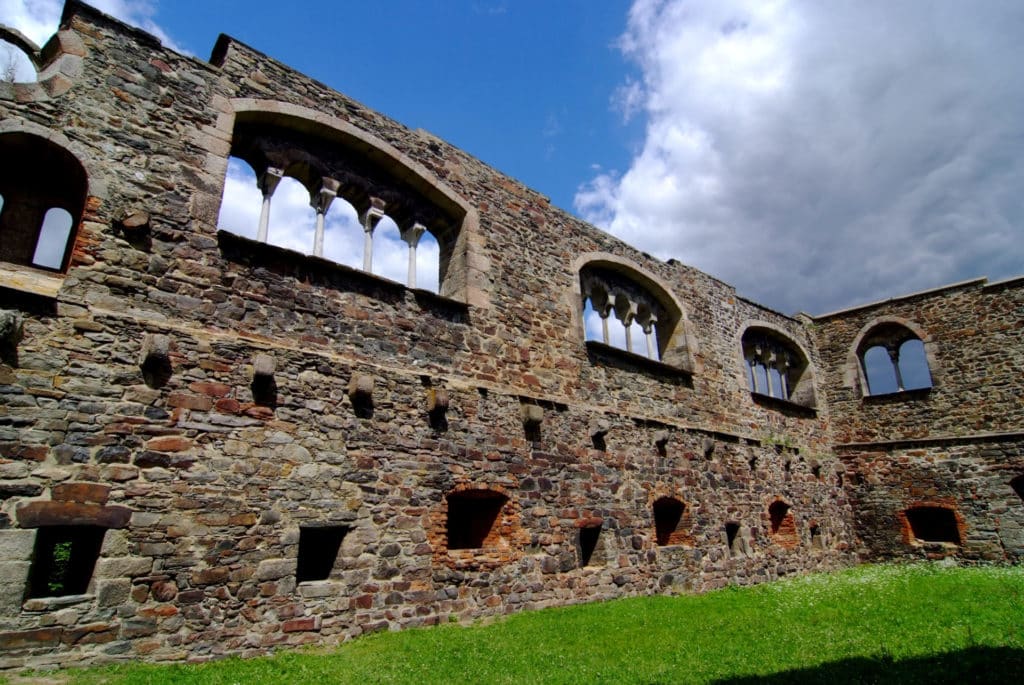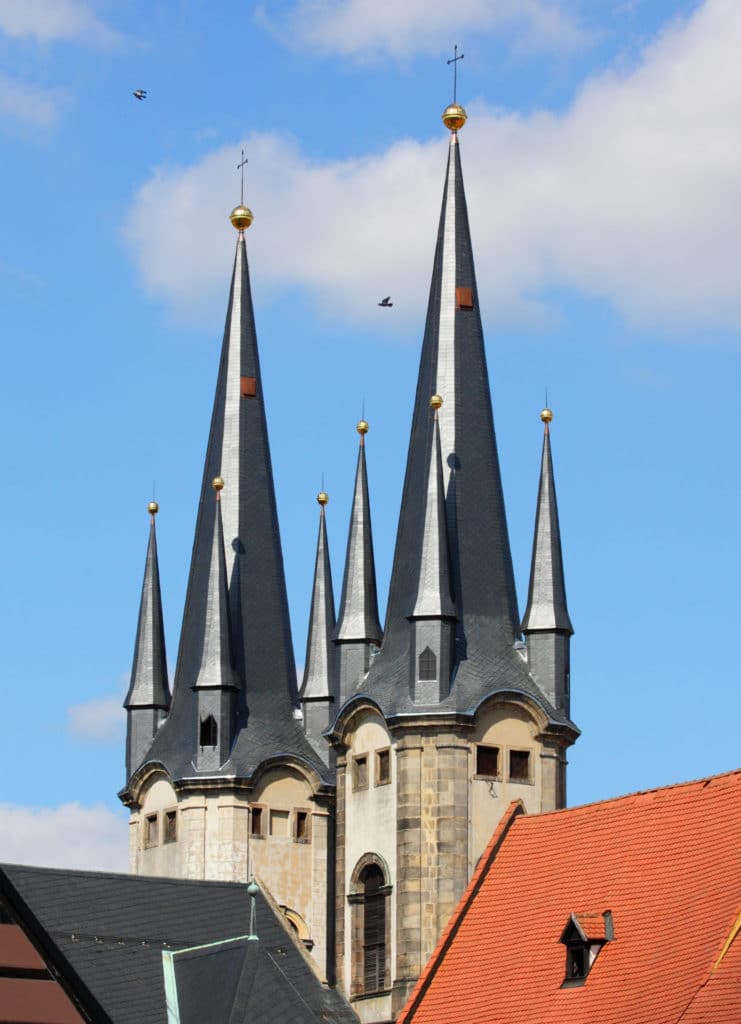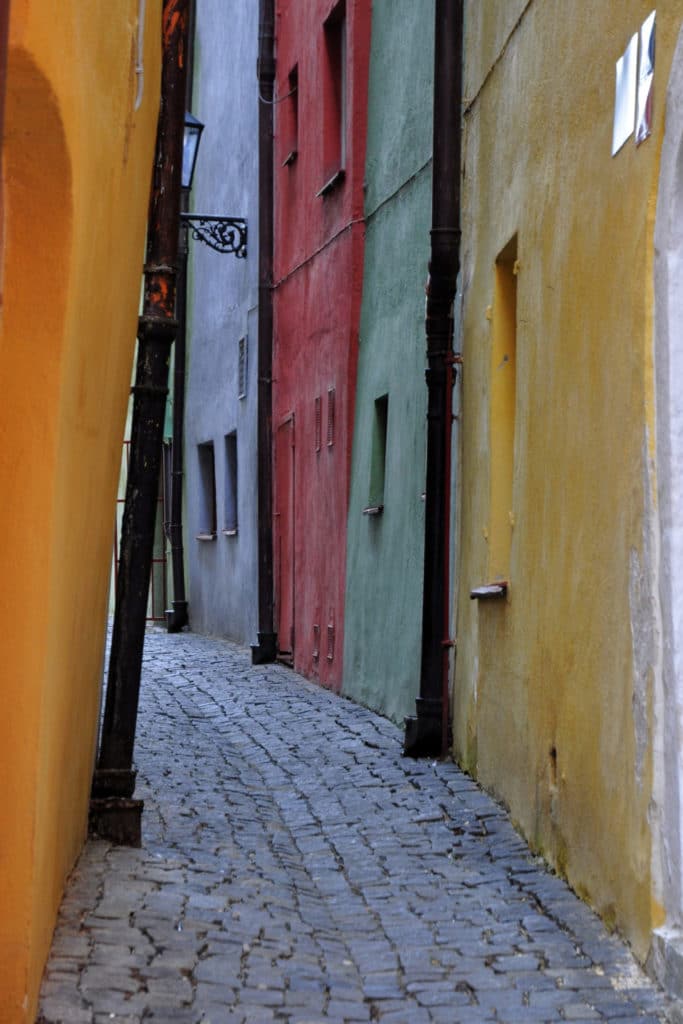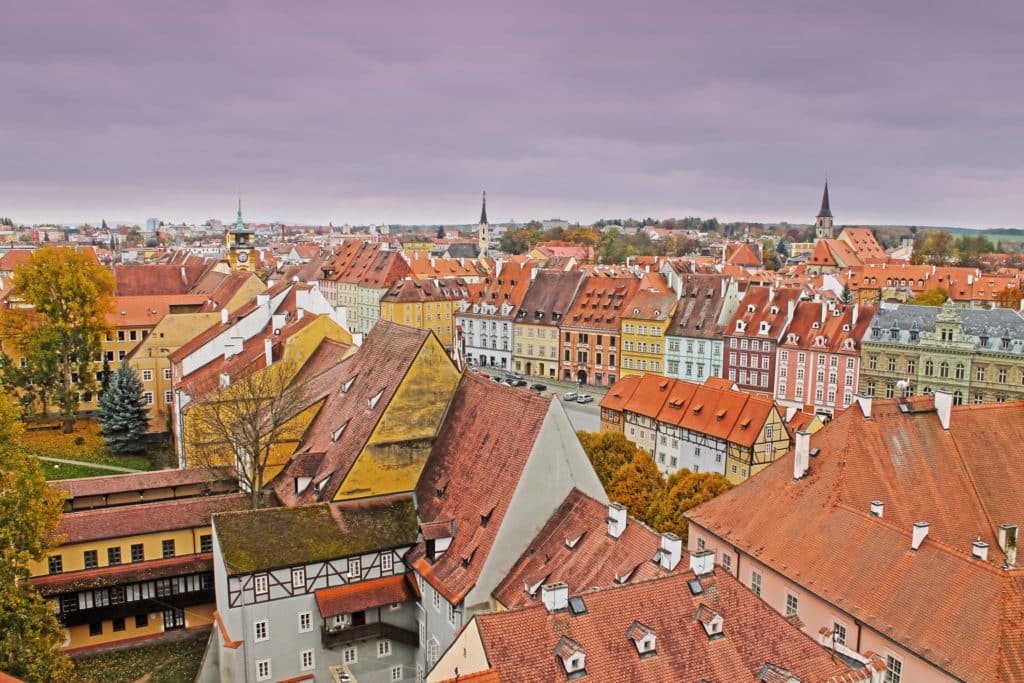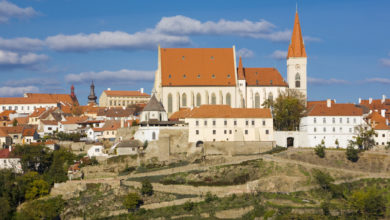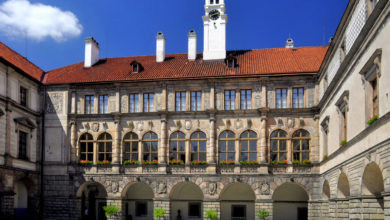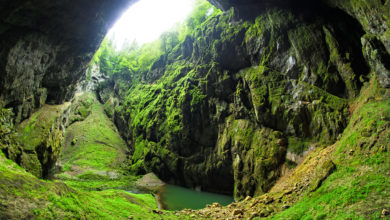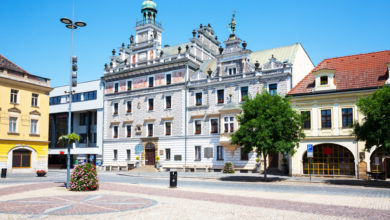Cheb
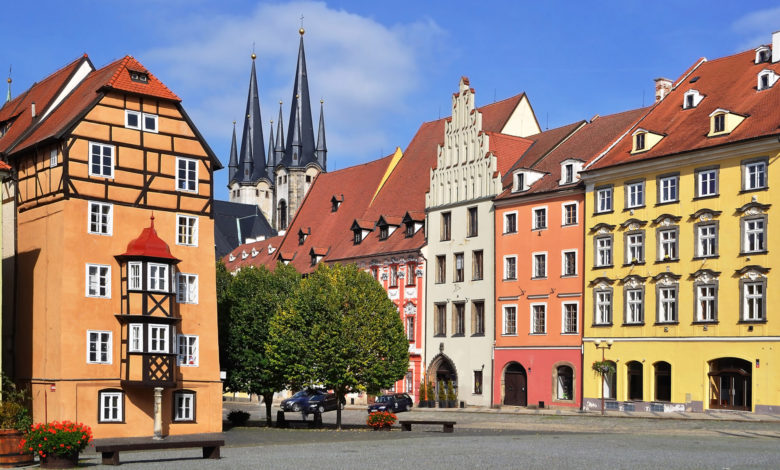
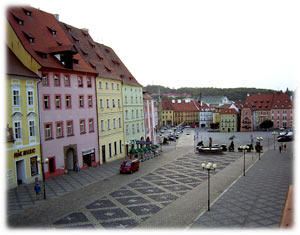 The oft-forgotten city of Cheb, tucked away in the corner of the country that few people visit, is the last Czech city of any size before reaching the German border. It is a charming little off-the-beaten-track place with a town center filled with historic architecture. Cheb feels much less touristy and more authentic than many of the Czech Republic’s more popular destinations. Its streets are also colored with an interesting mix of German and Czech cultures, making it a fun little place to stop for a few hours or spend the night.
The oft-forgotten city of Cheb, tucked away in the corner of the country that few people visit, is the last Czech city of any size before reaching the German border. It is a charming little off-the-beaten-track place with a town center filled with historic architecture. Cheb feels much less touristy and more authentic than many of the Czech Republic’s more popular destinations. Its streets are also colored with an interesting mix of German and Czech cultures, making it a fun little place to stop for a few hours or spend the night.
Cheb’s bilingual, bicultural heritage could be seen most vividly in the main square, which could be mistaken for a German square if it weren’t for the Czech writing on windows. Among the city’s noteworthy sites are the eerie former Jewish Quarter, a small grouping of medieval houses known as the Špalíček, and the enormous Romanesque Chebský Hrad (Cheb Castle). Although you can only enter the castle during the day, the area is especially beautiful at night. It is easy to imagine that you have been transported back to the late Middle Ages while strolling along Cheb’s dark, empty streets and admiring the tower with its white cap glowing in the moonlight.
Cheb’s history is nothing short of fascinating. The city started 950 years ago as a former stronghold on the eastern flank of the Holy Roman Empire. It was once under the control of the famed Holy Roman Emperor Frederick I Barbarossa. As it was then known, Eger changed hands between German and Bohemian rulers several times before becoming part of the Bohemian Empire in 1322.
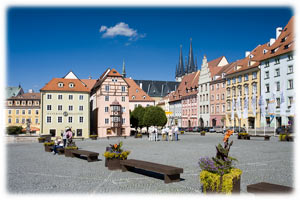
Following the Thirty Years War, Cheb stayed for the most part under Bohemian rule until it was forcibly handed over to Germany as part of the 1938 Munich Pact. The town’s Czech population was horrified by this development, but the native Sudeten Germans gave overwhelming support to the Nazis. When Cheb was returned to Czech hands soon after World War II, most of the Sudeten Germans were expelled.
Touring Cheb Castle
Cheb Castle is located in the northeast part of the Old Town and is one of Central Europe’s largest Romanesque structures, but you don’t have to be an architecture enthusiast to enjoy a visit. Overlooking the Elbe River, the castle was built in the 12th century and remained one of the country’s best-preserved town wall and castle fortification systems. The castle’s storied past goes all the way back to German Emperor Barbarossa and continues through the line of Czech kings, the last of which was George of Poděbrady, who occupied the castle in the 15th century.
The first of Cheb Castle’s main attractions is the Chapel of Sts. Erhart and Uršula. The two-tiered, early Gothic chapel has a somber first floor where the proletariat would congregate. In contrast, the emperor and his family enjoyed services from the much cheerier and brighter second floor decorated with Gothic windows. Stroll around the first floor to get a feel for what it may have been like for the city’s poor, but then spend most of your time basking in the beauty and light of the second-floor chapel.
The other attraction found at Cheb Castle is the Černá věž (Black Tower). It stands across the courtyard from the chapel and rises an astonishing 18m (59 feet) into the air. The black color of the tower comes from the lava rocks that were taken from the nearby Komorní Hůrka Volcano to create its foreboding structure. From the lookout at the top, you will be treated to some of the most stunning views of Cheb and its surrounding area.
Admission to the castle is 60 CZK for adults and 30 CZK for students and seniors. The castle and tower are only open Tuesday to Sunday between April and October. In April and October, the opening hours are 11 am to 5pm. From May through September, the complex is open from 9am to 5pm.
Tourist Information Center
The Tourist Information Center is located on Cheb’s main square at Náměstí Krále Jiřího z Poděbrad 33 (www.mestocheb.cz) and is a good source for maps, guidebooks, and lodging information.
Orientation
At the center of the Cheb Old Town lays the previously-mentioned triangular Náměstí Krále Jiřího z Poděbrad, and most of the main sights you will want to see lie either directly on the square or one of the many streets leading off it.
Getting There
Several daily express trains make the trip to Cheb from Prague’s main station. Trains follow one of two routes – via Plzeň or via Karlovy Vary. The trains that stop in Plzeň reach Cheb about 45 minutes before the trains that run through Karlovy Vary, which brings the total duration of the trip to just over three hours. A second-class ticket costs 274 CZK.
Trains run every two hours during the day between Cheb and Mariánské Lázně. The trip takes 30 minutes and costs 45 CZK for second class tickets. Trains from Cheb to Karlovy Vary run hourly. The trip takes about one hour and costs 72 CZK.
Buses for Cheb depart Prague’s Florenc bus station about every two hours during the day. The trip takes a little more than three hours and costs about 200 CZK, making it a slightly less expensive and slightly longer trip than travelling by train.
Cheb is located on the E48, one of the main highways leading to Germany. If you are driving from Prague, take the same route you would to Karlovy Vary, which eventually brings you to Cheb. The drive takes about two hours.
Minibus Prague – Cheb. Book comfortable minibus transfer online. English speaking drivers.
A Side Trip to Františkovy Lázně
Františkovy Lázně is located only about 10 minutes up the road from Cheb and makes for a fun little side trip. It is the smallest and arguably the cheeriest of the three major Bohemian spa towns. Though it pales in size compared to Karlovy Vary and Mariánské Lázně, Františkovy Lázně has taken great strides in the past few years to reverse its decline under Communism. There is not much to see beyond the Spa Museum, which holds an interesting display of bathing artefacts, but it has its own charm and is a quieter place to spend the night than Cheb.
Buses are the best mode of transportation for travel between Cheb and Františkovy Lázně. They leave every 10 to 20 minutes from Cheb’s main bus station and make the trip in 15 minutes. Tickets cost 15 CZK.
To get to Františkovy Lázně from Cheb by car, drive down Highway E49 for about 15 minutes.

